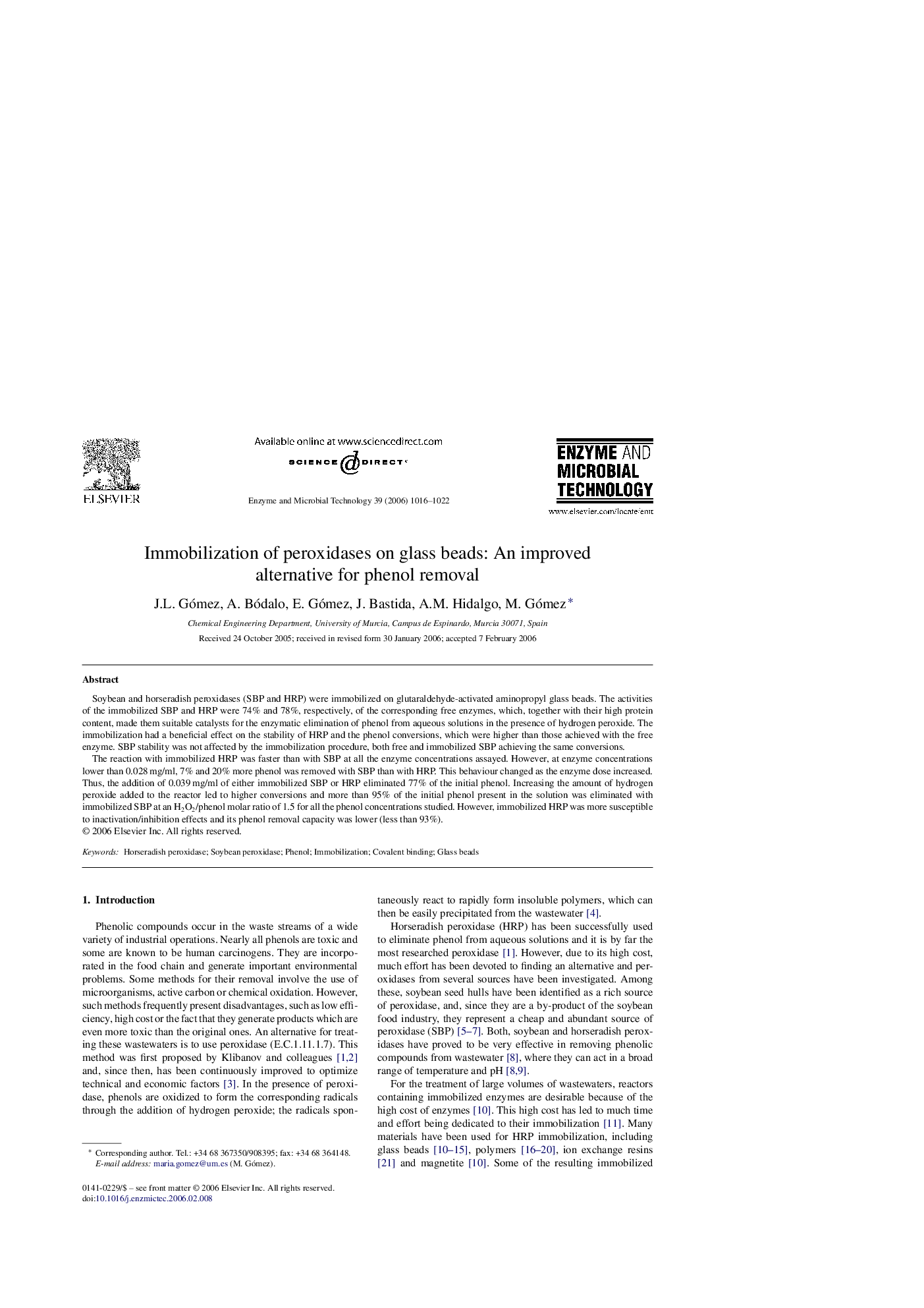| Article ID | Journal | Published Year | Pages | File Type |
|---|---|---|---|---|
| 18659 | Enzyme and Microbial Technology | 2006 | 7 Pages |
Soybean and horseradish peroxidases (SBP and HRP) were immobilized on glutaraldehyde-activated aminopropyl glass beads. The activities of the immobilized SBP and HRP were 74% and 78%, respectively, of the corresponding free enzymes, which, together with their high protein content, made them suitable catalysts for the enzymatic elimination of phenol from aqueous solutions in the presence of hydrogen peroxide. The immobilization had a beneficial effect on the stability of HRP and the phenol conversions, which were higher than those achieved with the free enzyme. SBP stability was not affected by the immobilization procedure, both free and immobilized SBP achieving the same conversions.The reaction with immobilized HRP was faster than with SBP at all the enzyme concentrations assayed. However, at enzyme concentrations lower than 0.028 mg/ml, 7% and 20% more phenol was removed with SBP than with HRP. This behaviour changed as the enzyme dose increased. Thus, the addition of 0.039 mg/ml of either immobilized SBP or HRP eliminated 77% of the initial phenol. Increasing the amount of hydrogen peroxide added to the reactor led to higher conversions and more than 95% of the initial phenol present in the solution was eliminated with immobilized SBP at an H2O2/phenol molar ratio of 1.5 for all the phenol concentrations studied. However, immobilized HRP was more susceptible to inactivation/inhibition effects and its phenol removal capacity was lower (less than 93%).
